

Pabellón El Eco
2013 Mexico City, Mexico
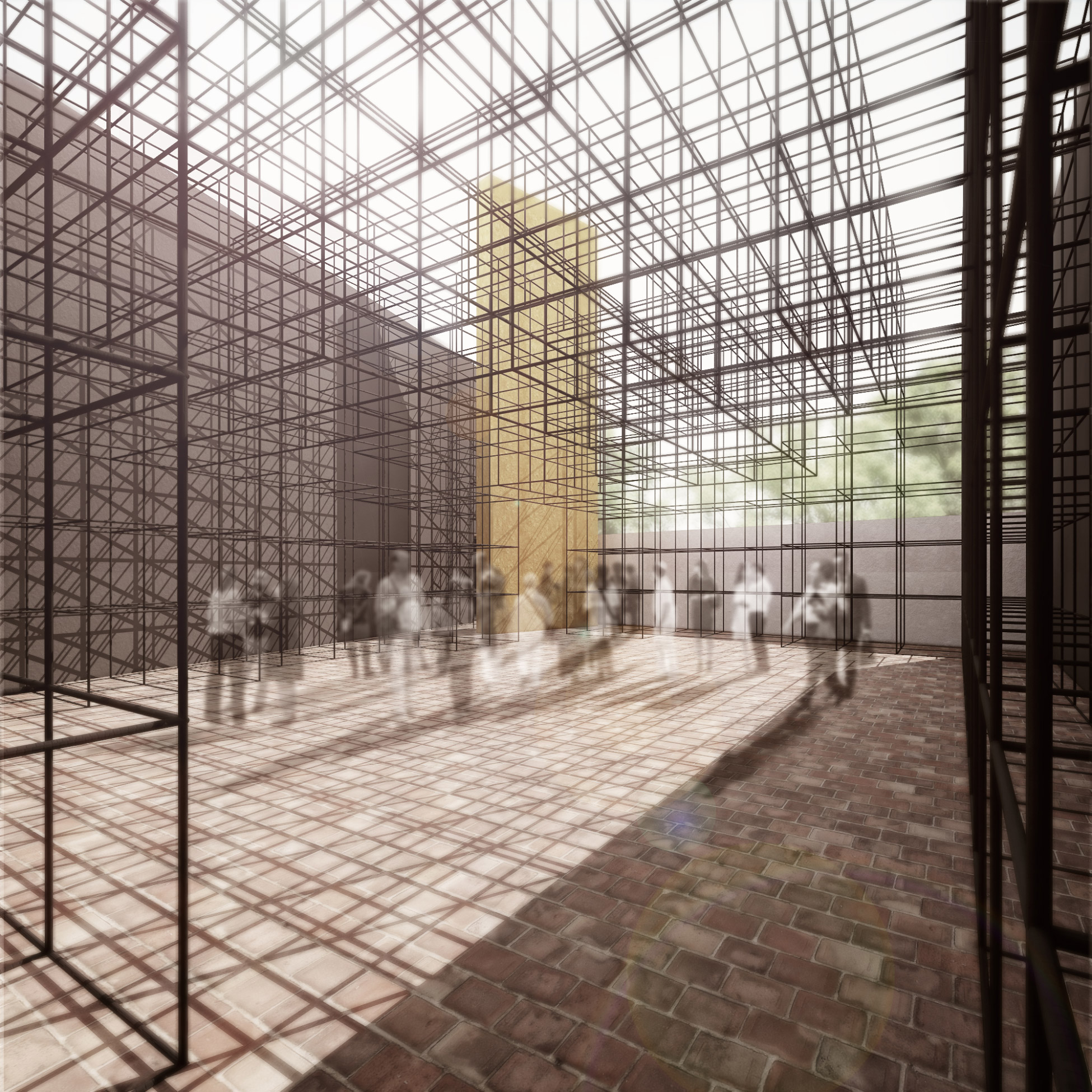
The courtyard of this museum, one of Mathias Goeritz’s greatest works, is an iconic space in Mexico City. Its emptiness helps it to stand out against the density of the urban fabric, and the significance of the walls and those who created them contextualize it in the city’s history.
Revealing this void was the decisive strategy of the intervention, which found its form by generating a structure that makes it possible to materialize the volume it occupies, marking out and drawing attention to its powerful and unique geometry. The intervention floats in the interior, separated from the perimeter, in a way that always honors the original work.
The first step was the process of filling the void with a three-dimensional grid—a system of 1 m3 modules in metal rebar—followed by an excavation of the resulting construction, removing modules to make it a livable space. The binding system employed hand- worked wire ties, a trade-specific working method that reveals the laborers’ skill.
The resulting construction is an exercise that encourages users to reflect on the relationship between addition and subtraction, and between solid and void.
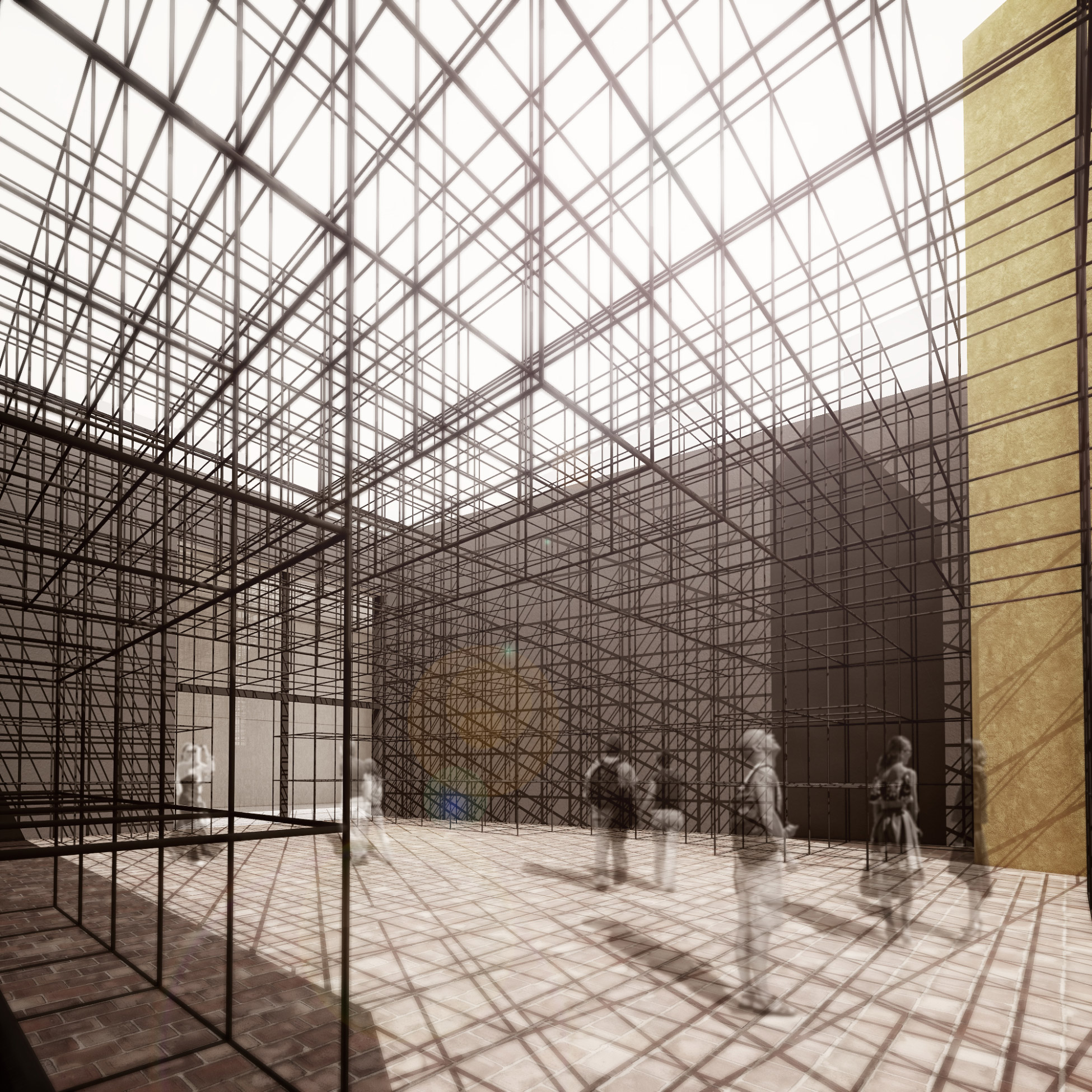
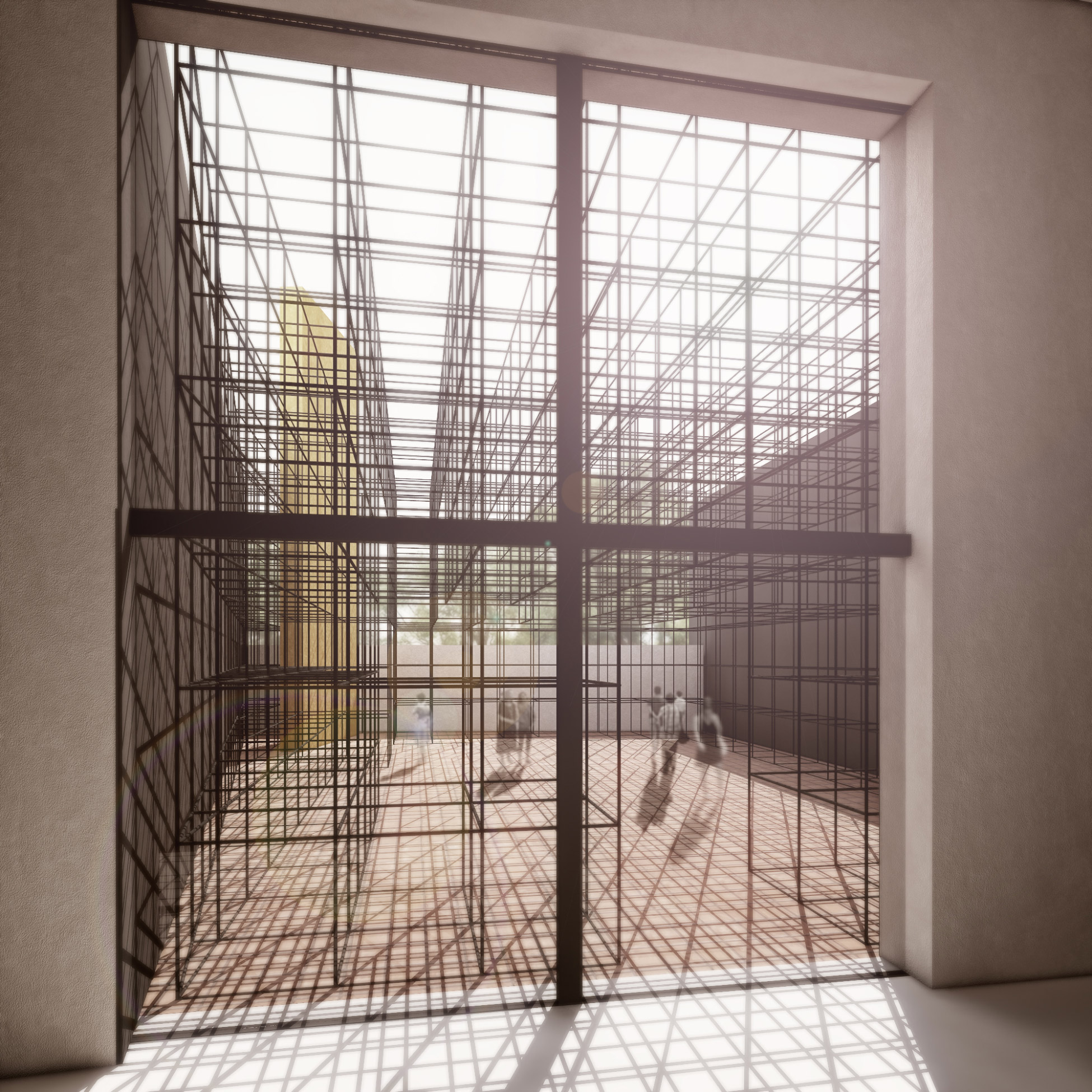
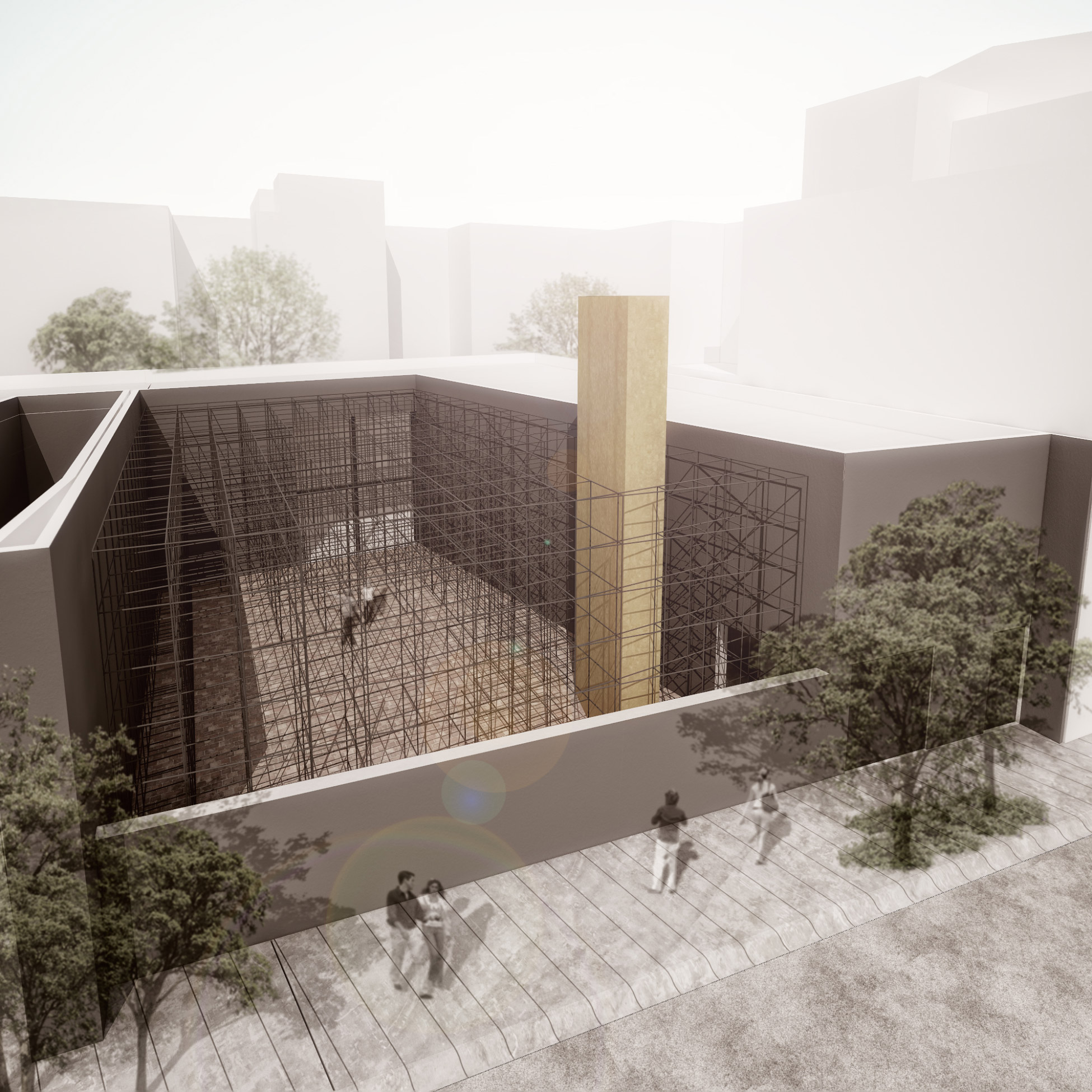
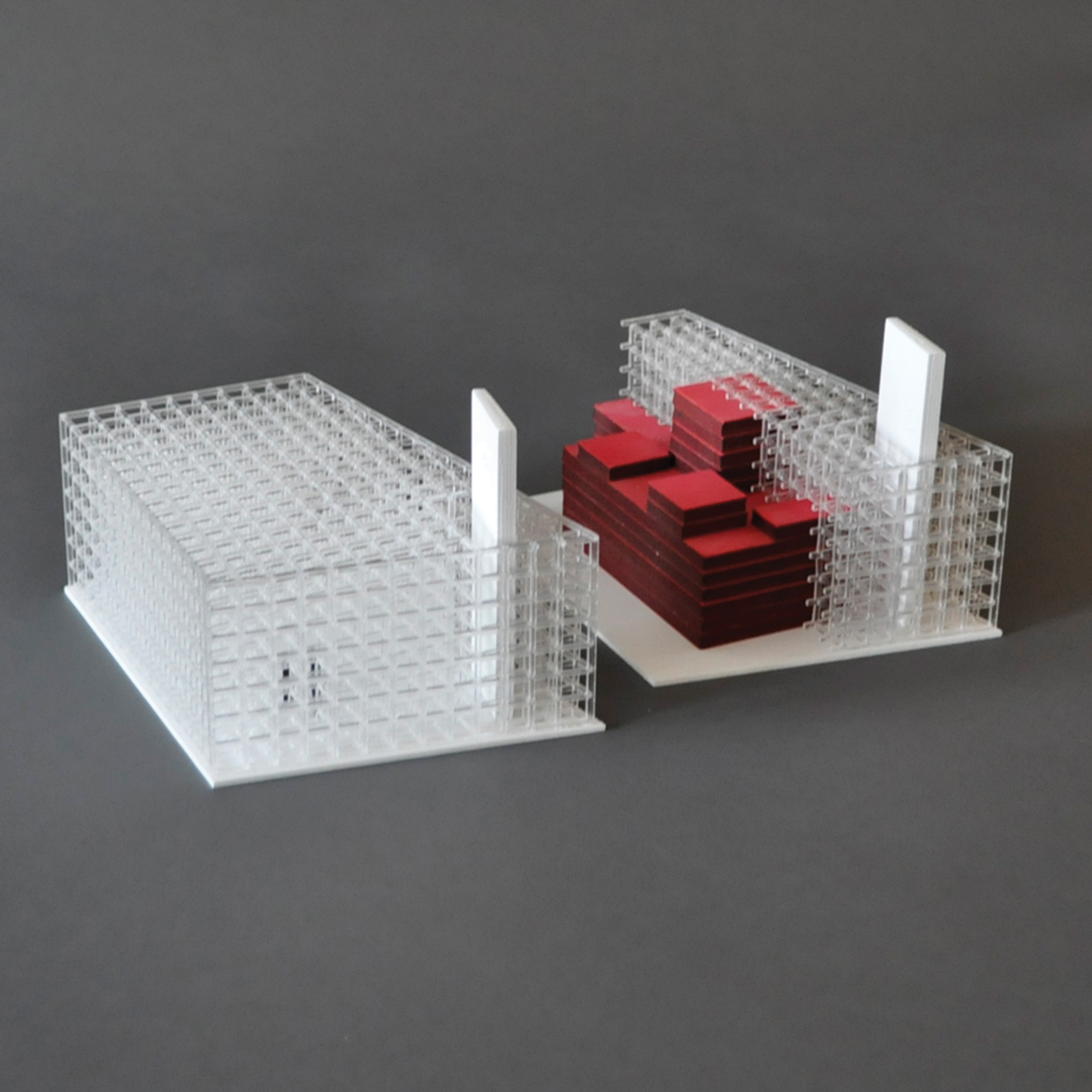
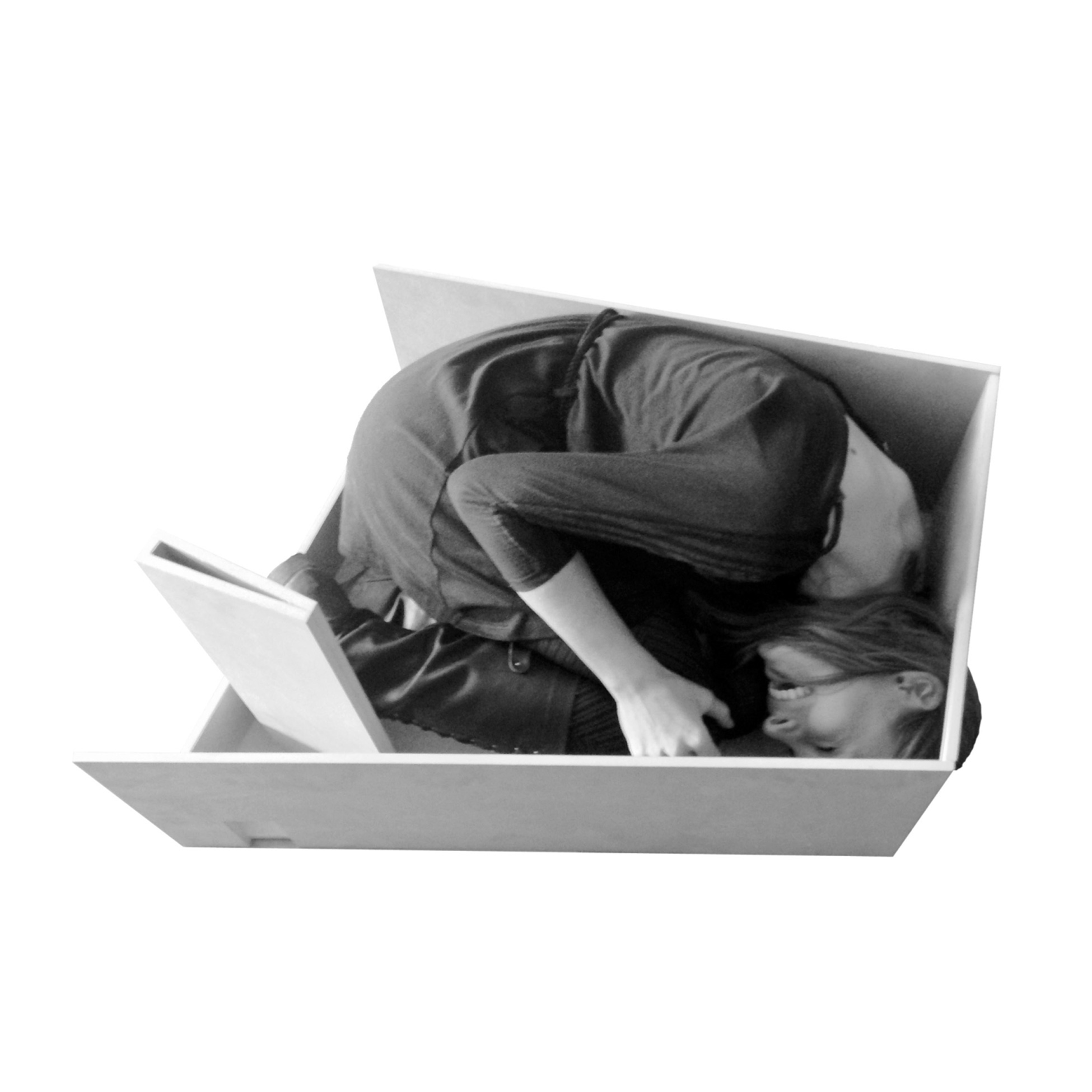
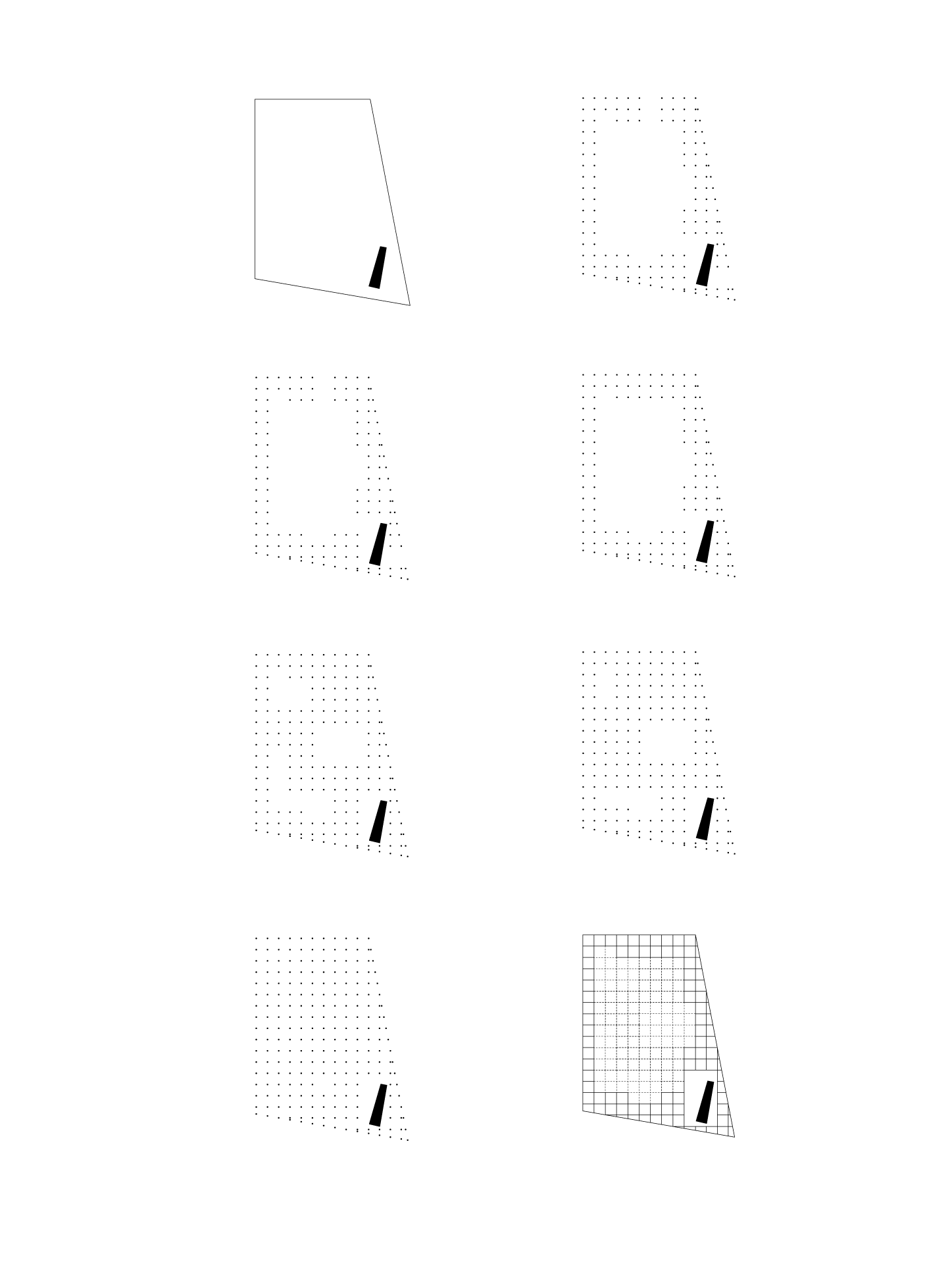
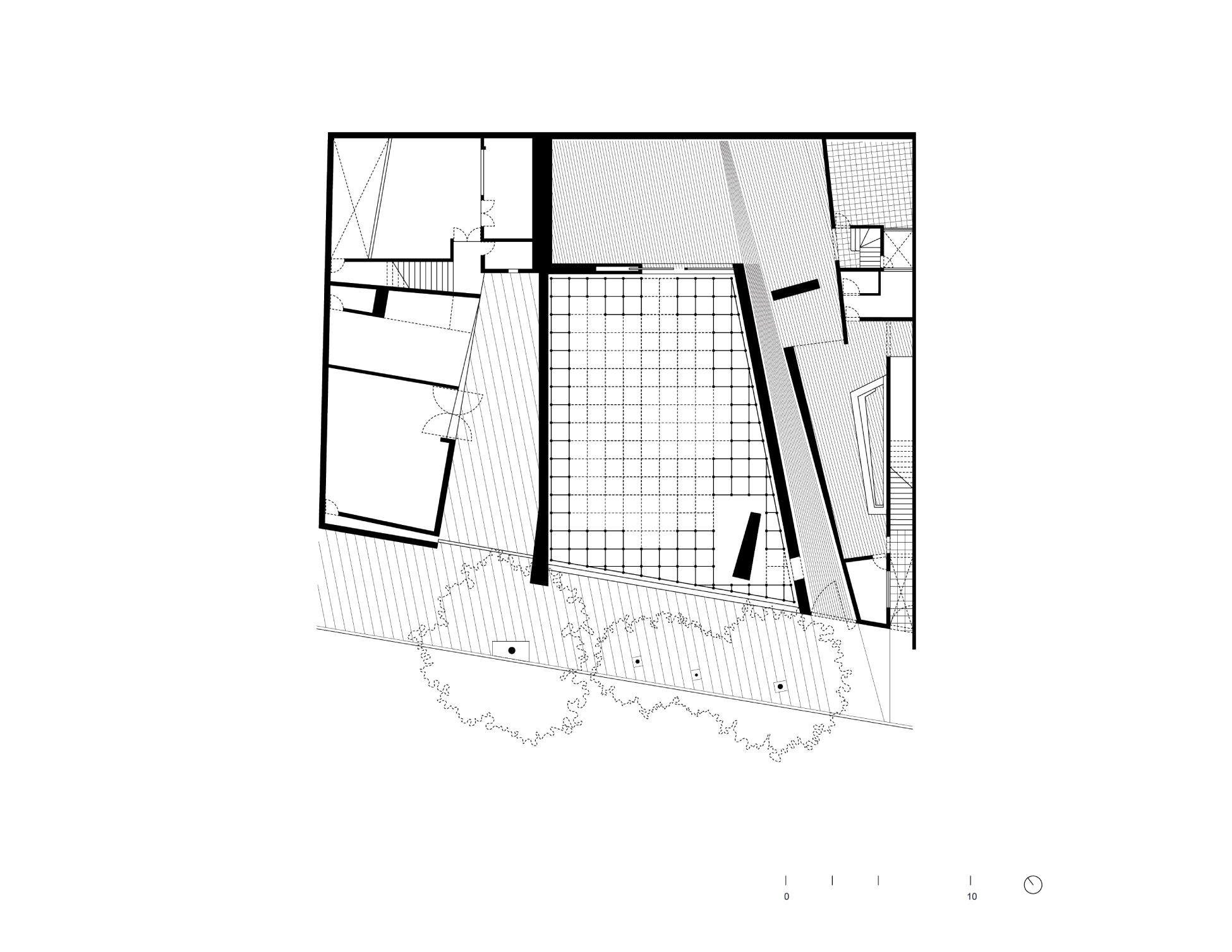
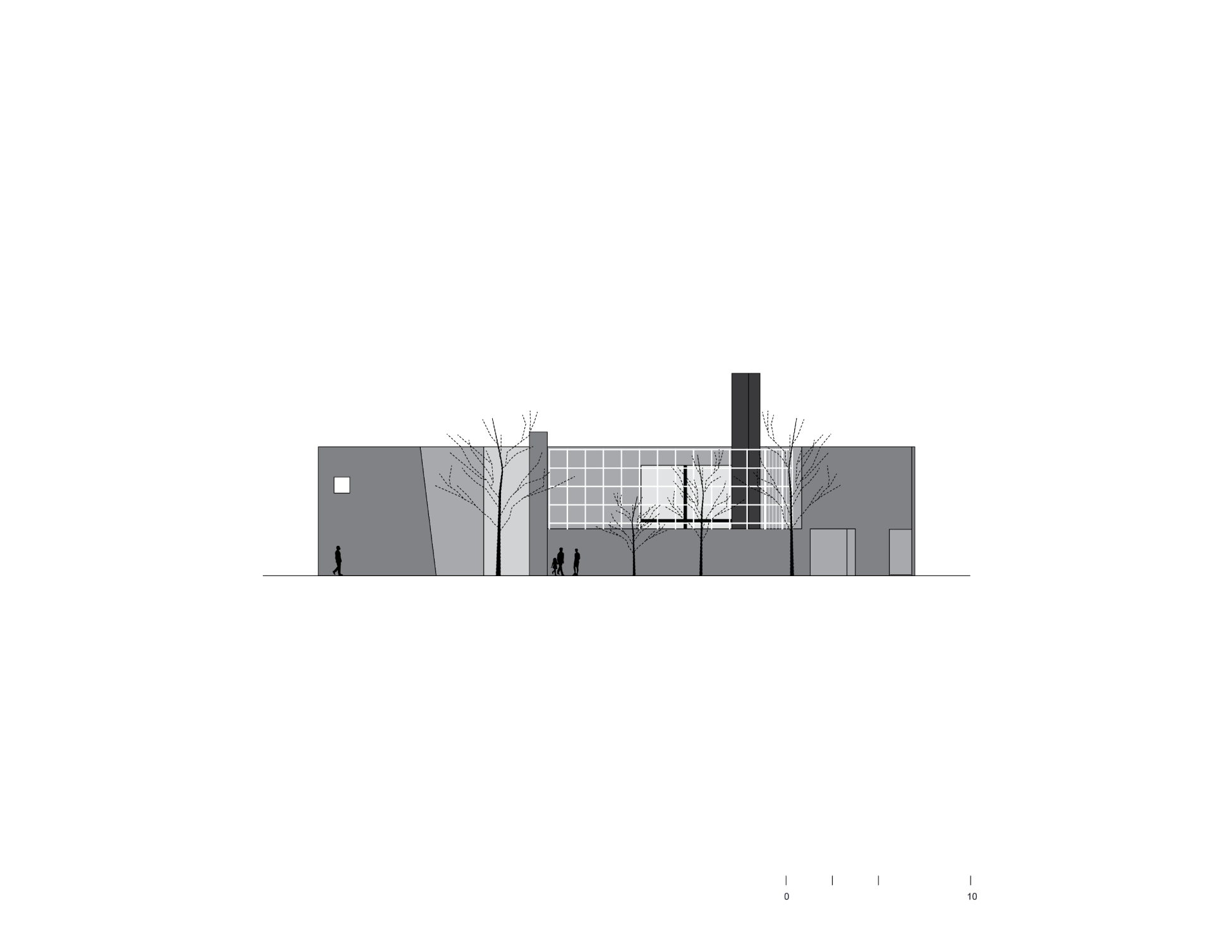
Credits
Architecture: Ignacio Urquiza, Bernardo Quinzaños, Collaborators: Diego Rivero Borrell, María Fernanda Téllez, Aida Hurtado, Sebastián Segura, Carolina Almeida, Tadeo Franco, Manuel de la Torre